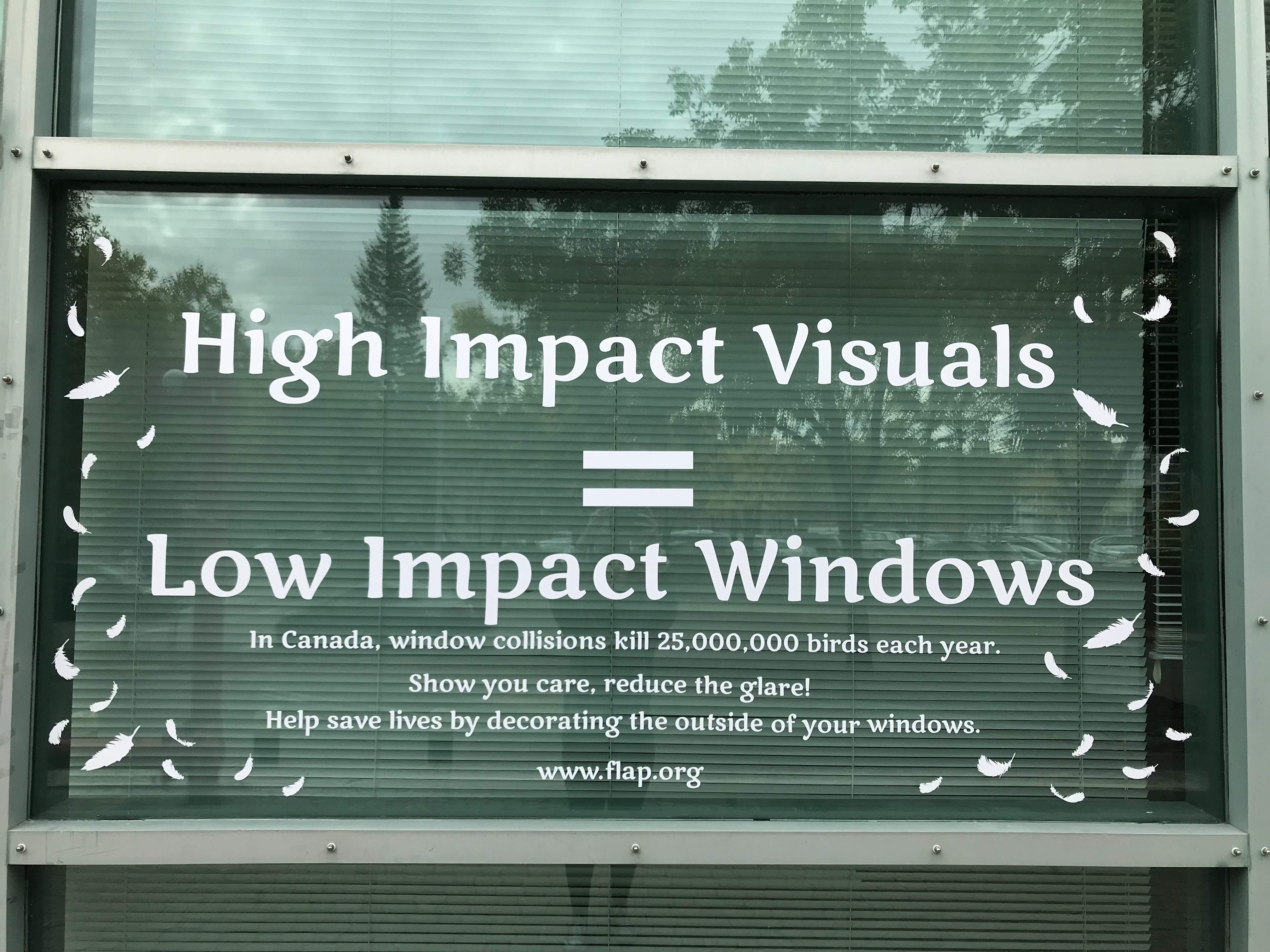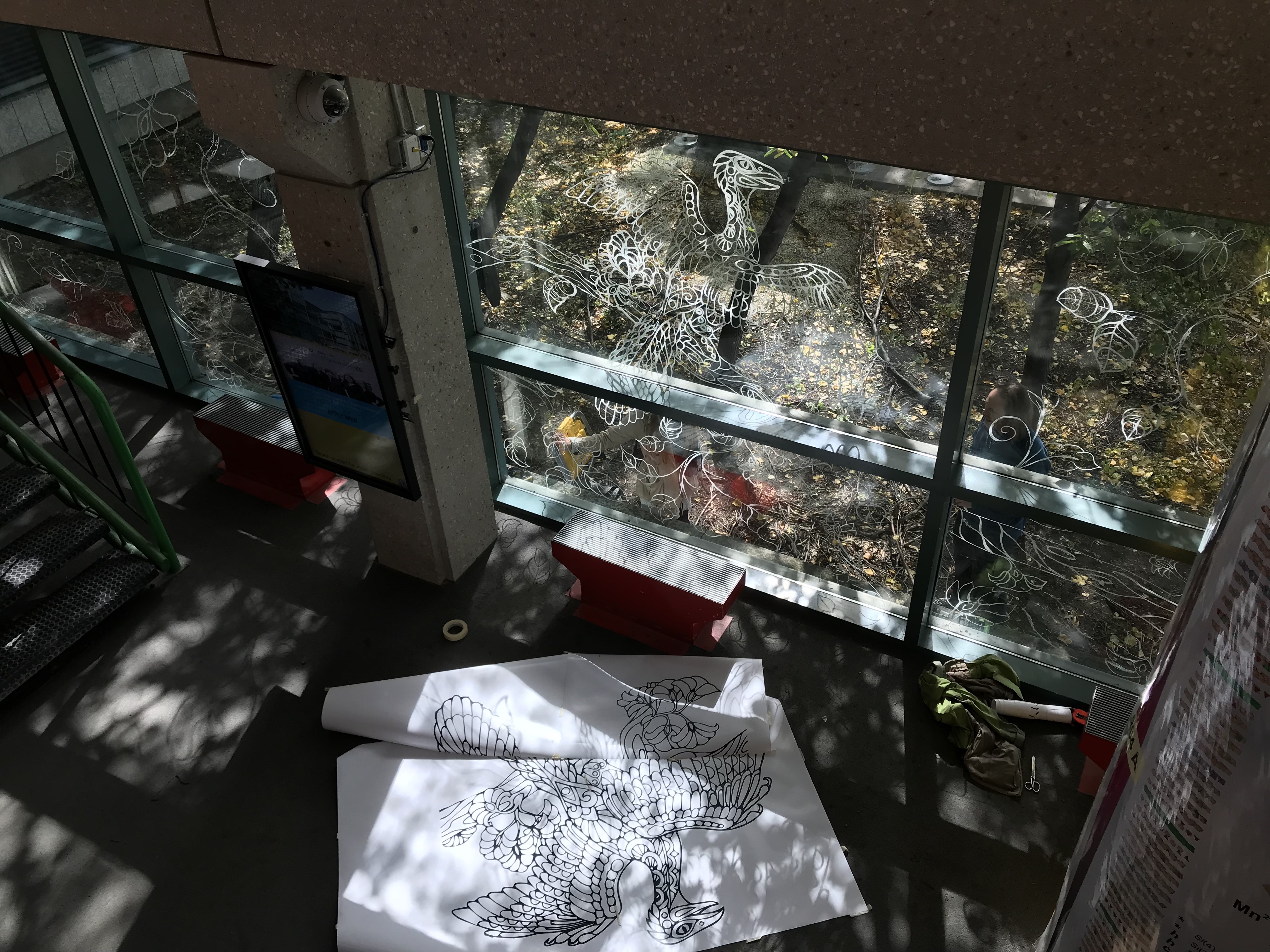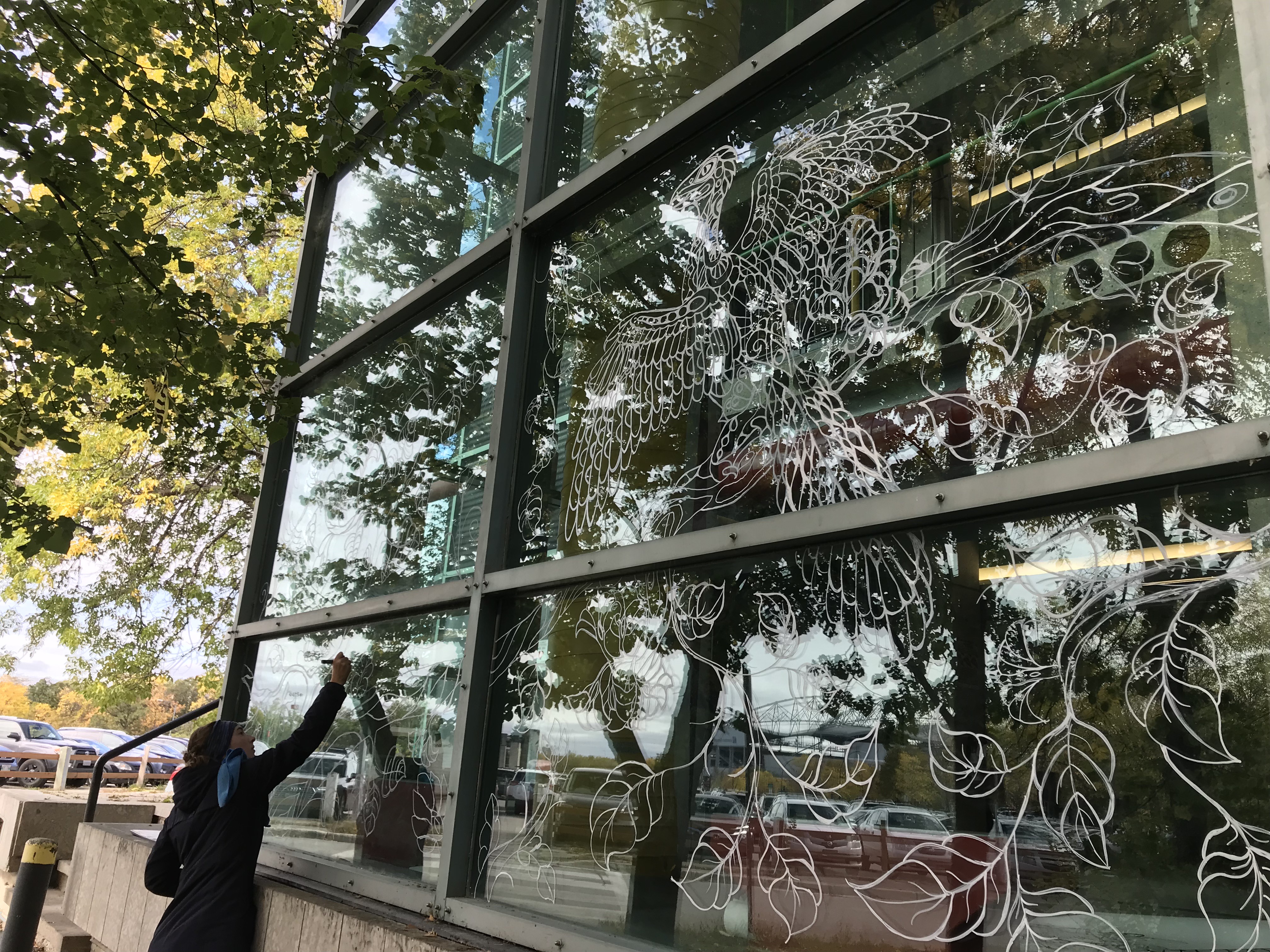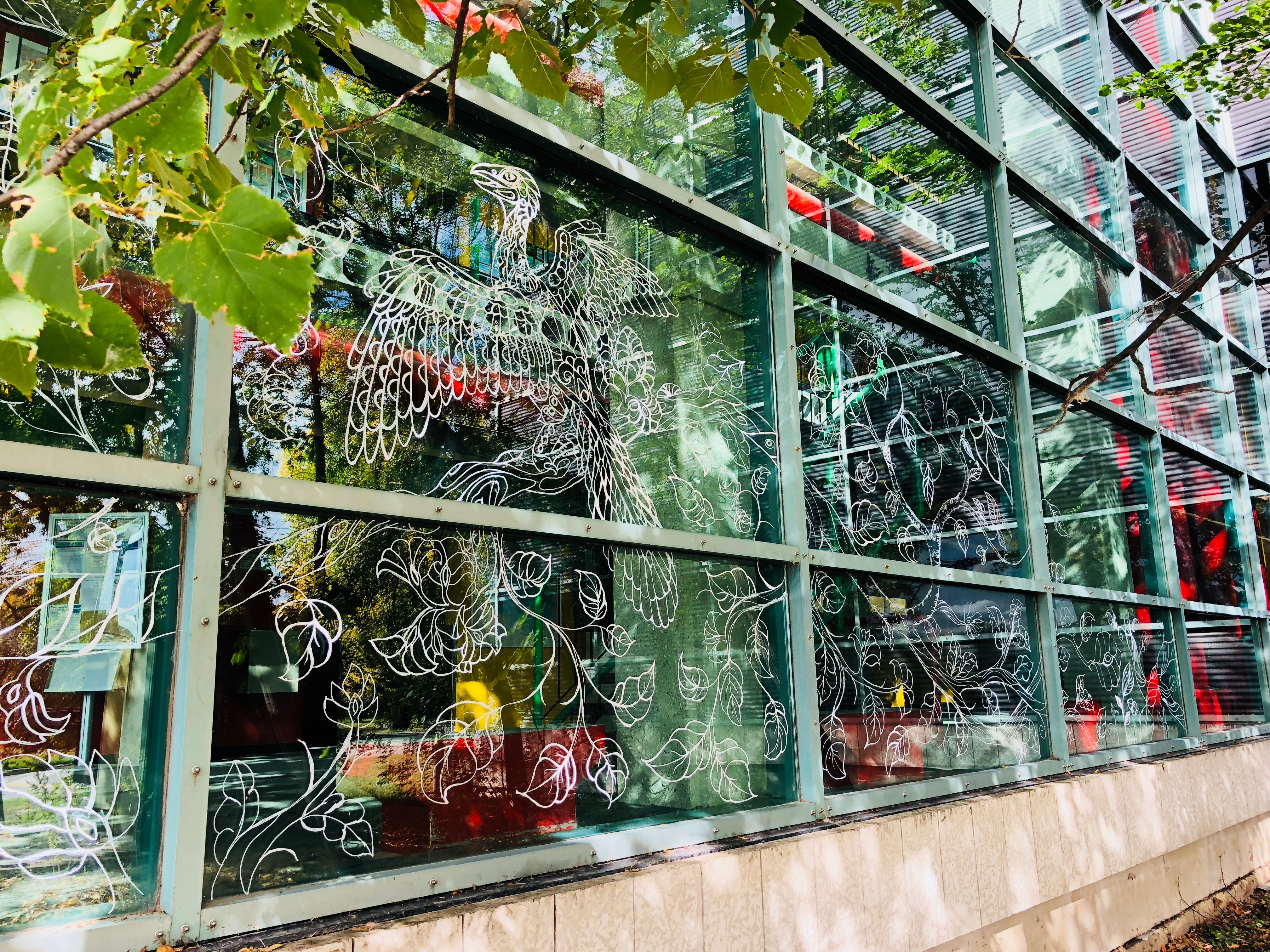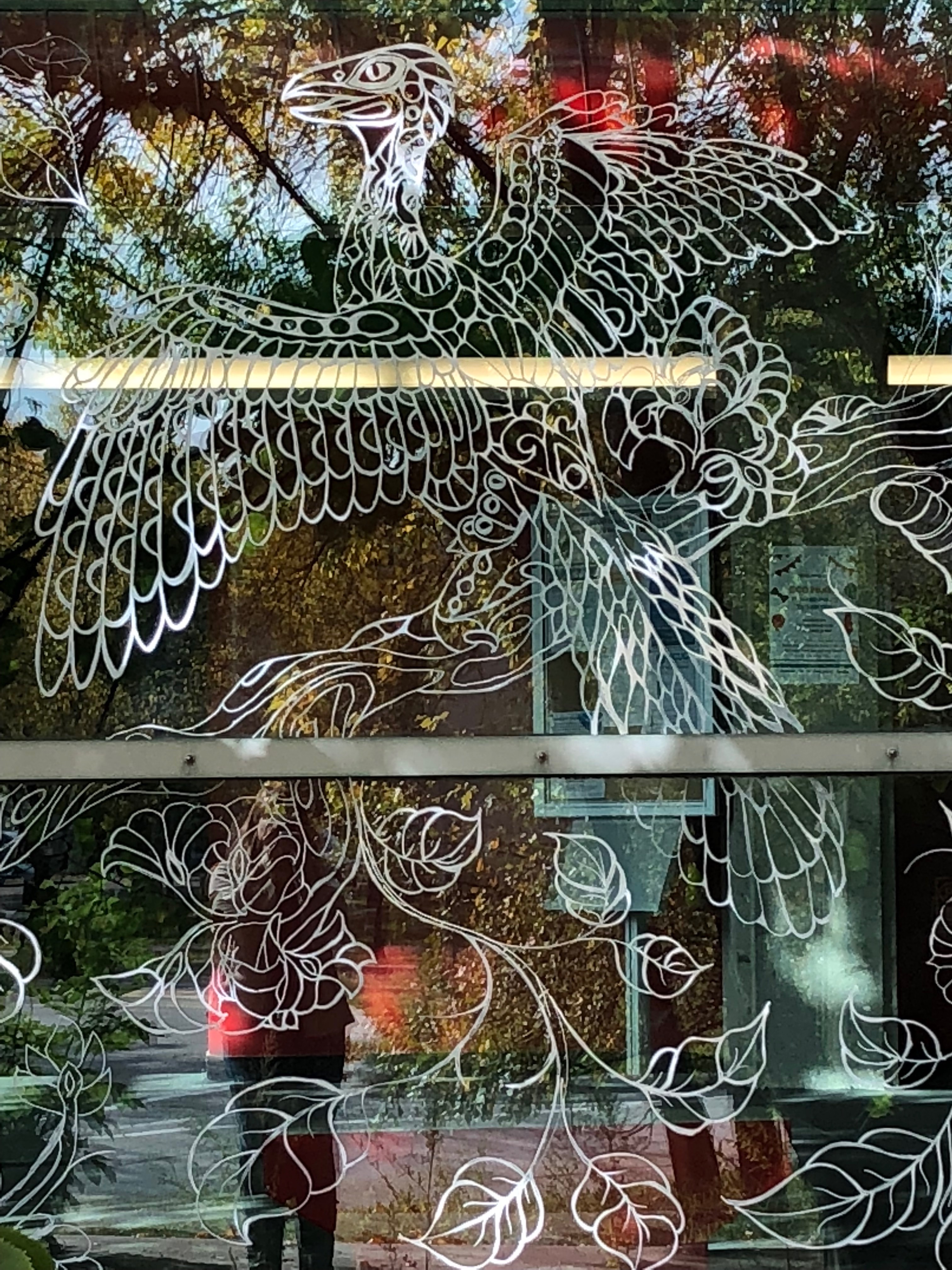Bird-window Collision Art
Aren’t birds great? They offer us humans countless hours of entertainment, sources of artistic inspiration and spiritual-significance in our faith systems1. They’re also great because of all the free ecosystem services they provide us including: pollination, seed dispersal, forest building and consumption of disease carrying insects2.
However, approximately 25 million birds perish annually in Canada as a result of window collisions3. For many species, birds are thought to collide with windows because of the lateral placement of their eyes4. In most cases, when your eyes are located on the sides of your head, your depth perception and resolution suffers4. This means birds in flight struggle to detect glass as a barrier when it is transparent or reflecting surrounding habitat5.
Upon impact, birds usually meet one of two fates: instant death or temporary disorientation5,6. Disoriented and immobilized birds are then vulnerable to lurking domestic cats or other scavengers5,6.
Although the extent to which bird-window collisions exactly impact our bird populations is still uncertain7, we now know how to prevent or minimize mortalities8. And I’ll give you a hint, the solution isn’t handing out eyeglasses to birds.
So, if you love birds and want to learn more about bird-window collisions and what you can do to prevent them visit FLAP Canada at http://www.flap.org.
Author: Jessica Waldinger
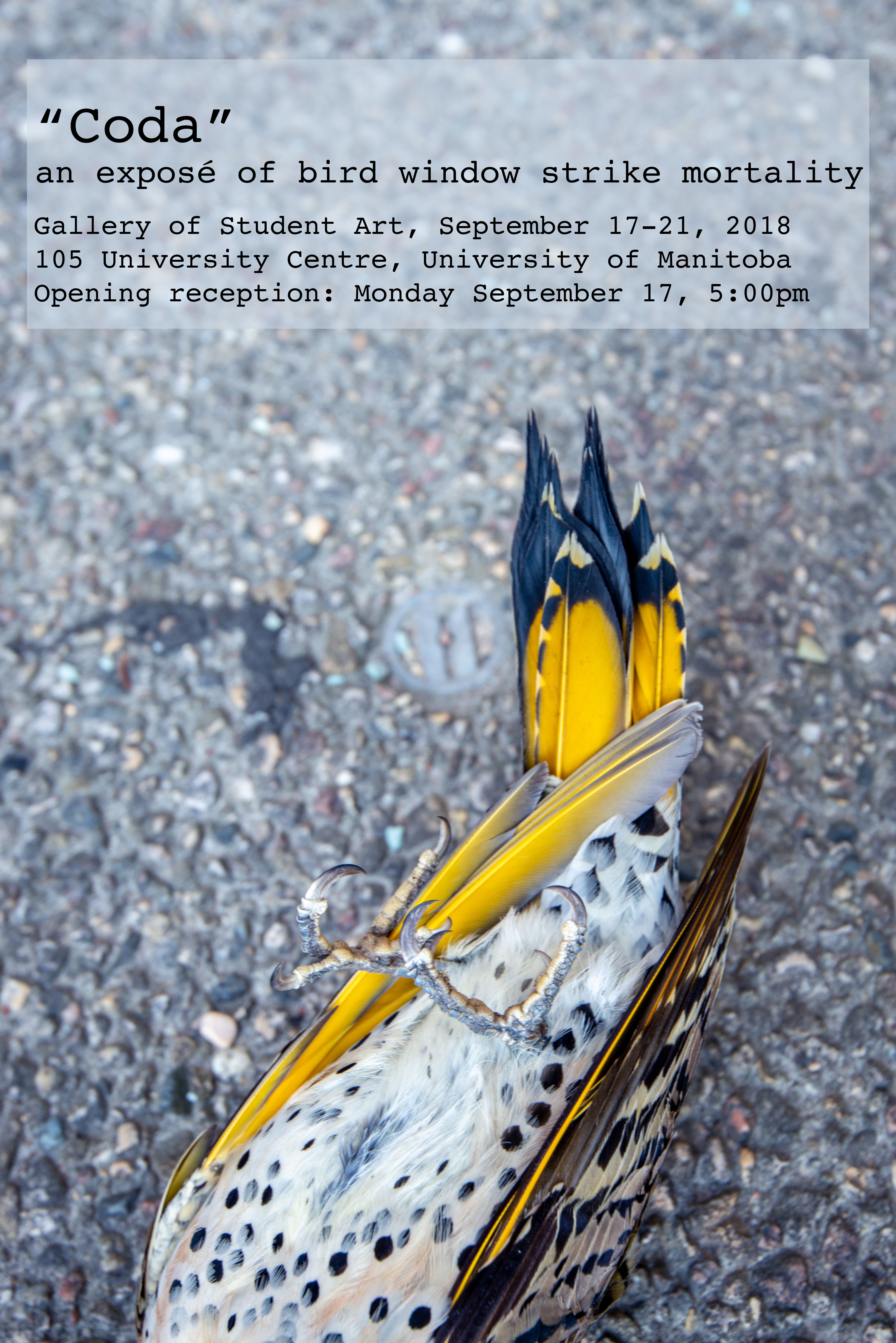
Sources:
[1] Belaire, J. A., Westphal, L. M., Whelan, C. J., & Minor, E. S. (2015). Urban residents’ perceptions of birds in the neighborhood: Biodiversity, cultural ecosystem services, and disservices. The Condor, 117(2), 192–202. https://doi.org/10.1650/CONDOR-14- 128.1
[2] Şekercioğlu, Ç. H., & Wenny, D. G. (2015). Why birds matter: from economic ornithology to ecosystem services. Journal of Ornithology, 156(S1), 227–238. https://doi.org/10.1007/s10336-015-1229-y
[3] Machtans, C. S., Wedeles, C. H. R., & Bayne, E. M. (2013). A first estimate for Canada of the number of birds killed by colliding with building windows. Avian Conservation and Ecology, 8(2), 6. https://doi.org/10.5751/ACE-00568-080206
[4] Martin, G. R. (2011). Understanding bird collisions with man-made objects: A sensory ecology approach. Ibis, 153(2), 239–254. https://doi.org/10.1111/j.1474-919X.2011.01117.x
[5] Klem, D. (1989). Bird-Window Collisions. Wilson Bulletin, 101(4), 606–620 https://doi.org/http://dx.doi.org/10.1676/08-118.1
[6] Audubon, New York City. (2007). Bird-safe building guidelines. Retrieved from http://www.nycaudubon.org/pdf/BirdSafeBuildingGuidelines.pdf
[7] Arnold, T. W., & Zink, R. M. (2011). Collision mortality has no discernible effect on population trends of North American birds. PLoS ONE, 6(9), 1–6. https://doi.org/10.1371/journal.pone.0024708
[8] Klem, D. (2009). Preventing Bird — Window Collisions. The Wilson Bulletin, 121(2), 314–321. https://doi.org/10.1676/08-118.1
